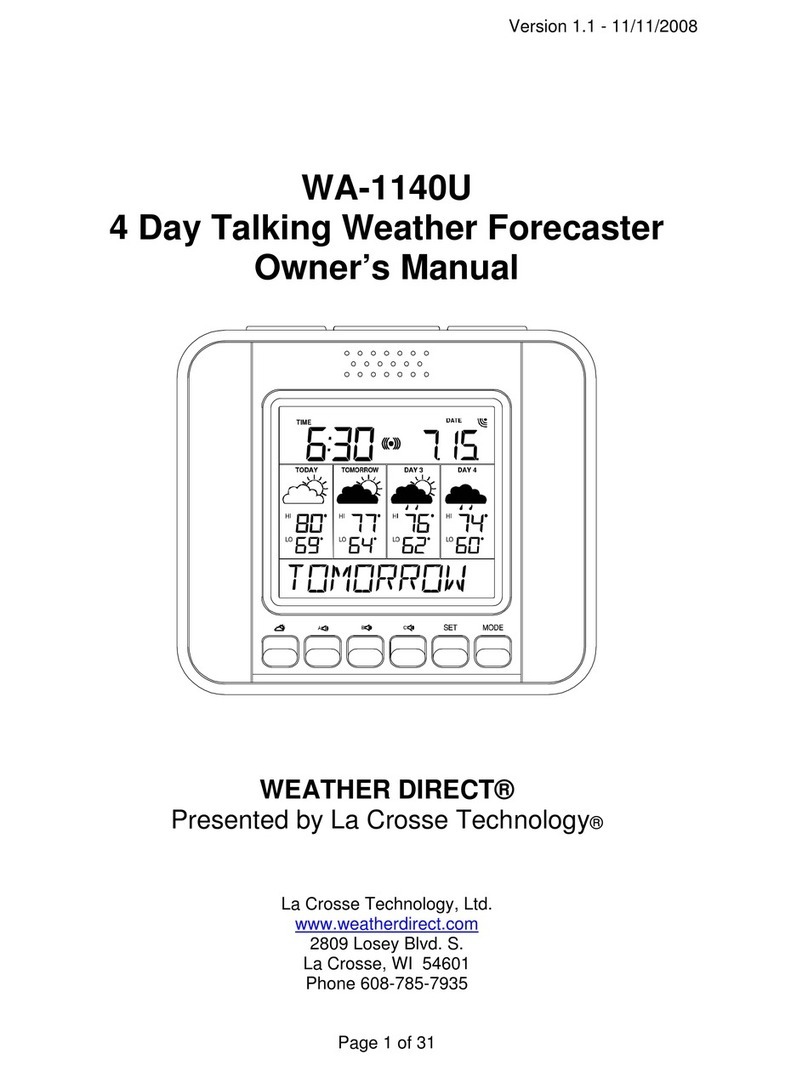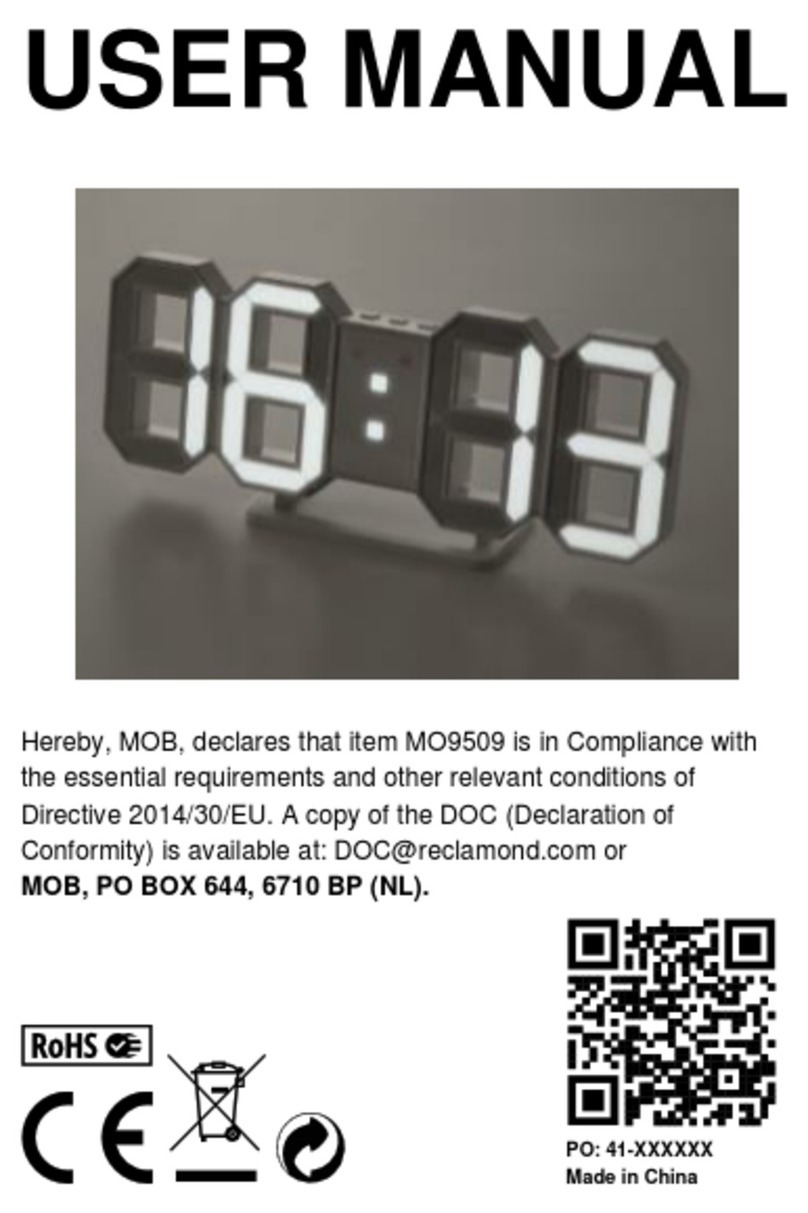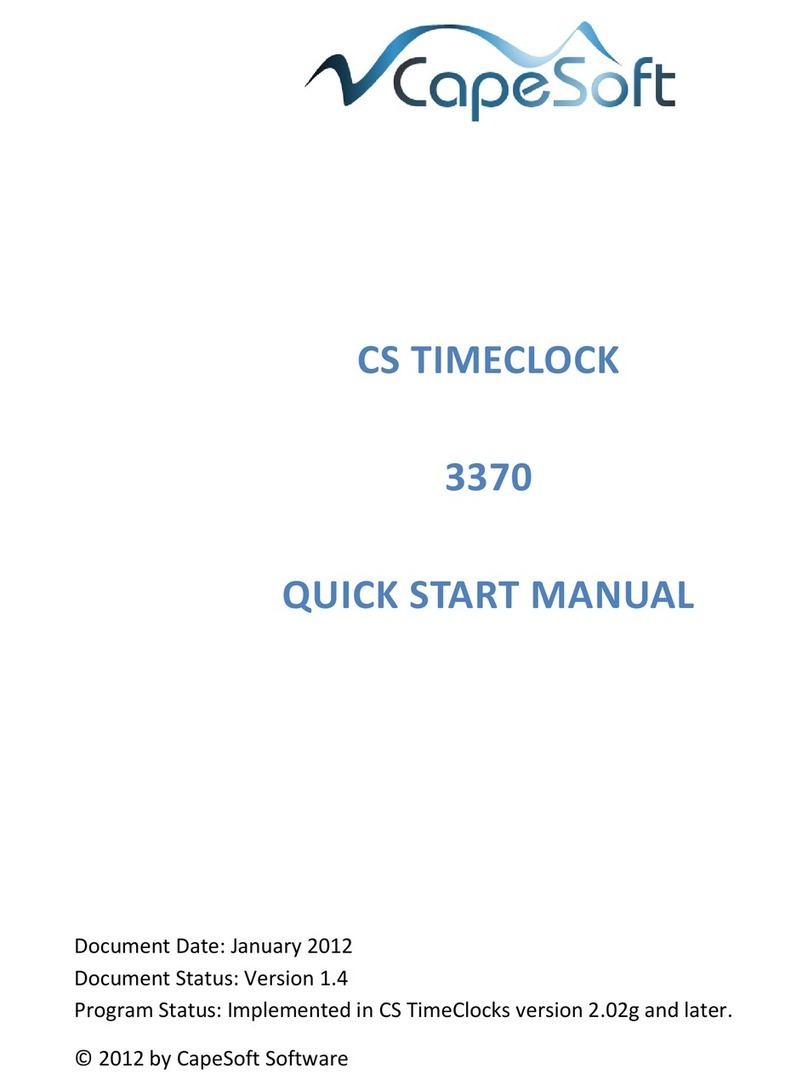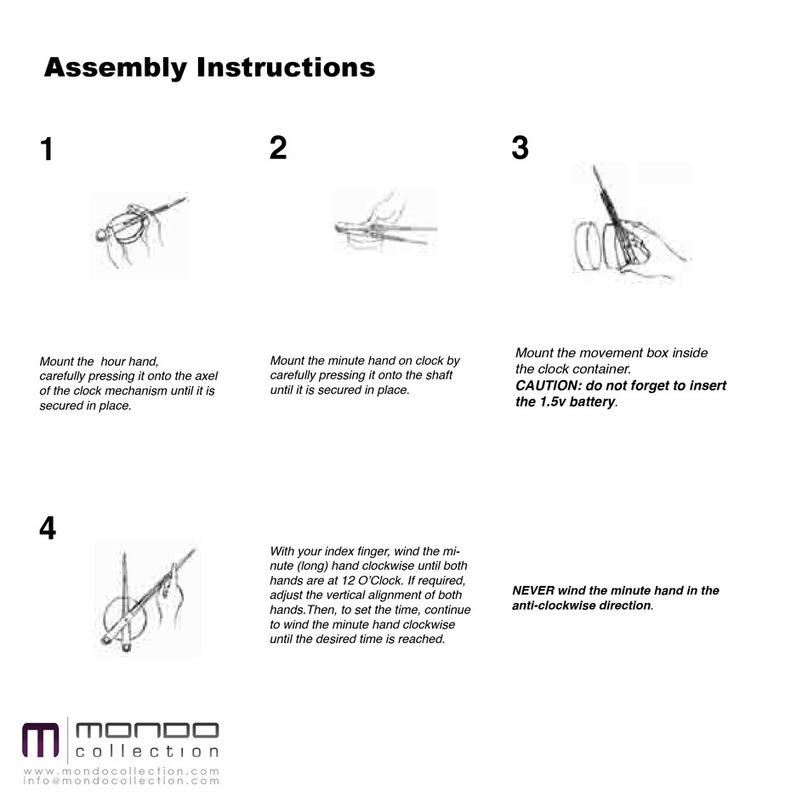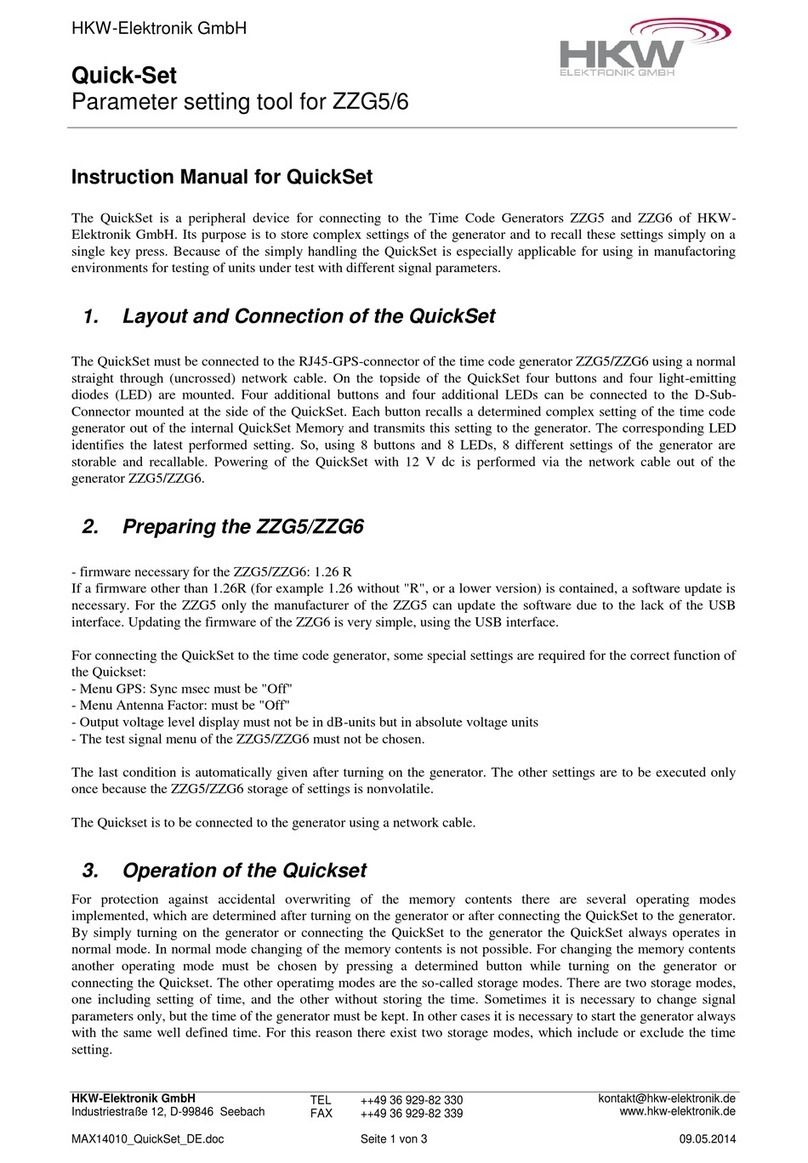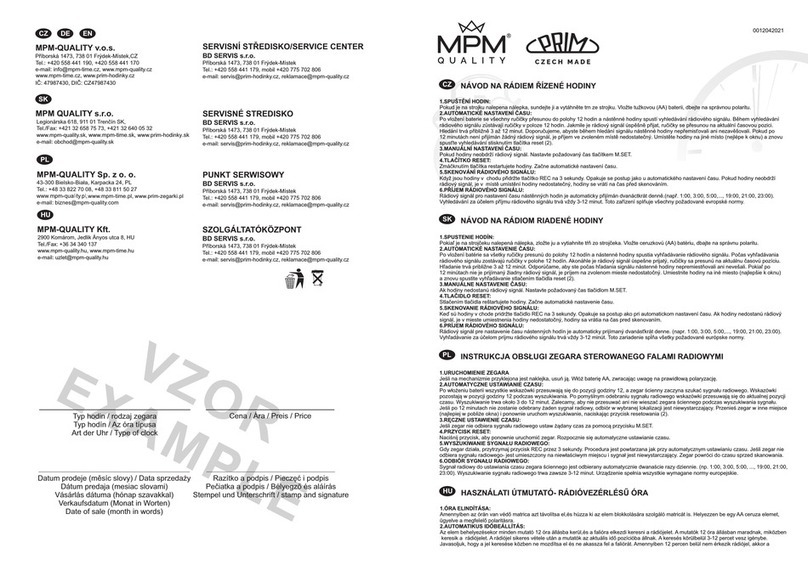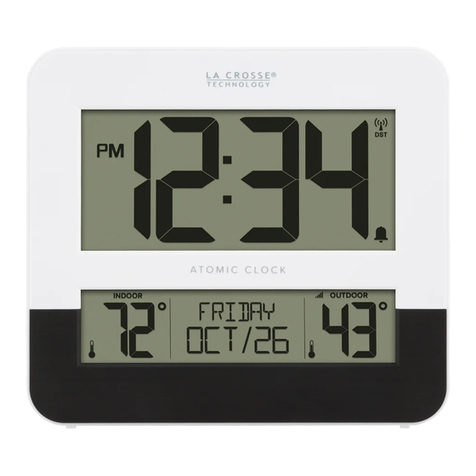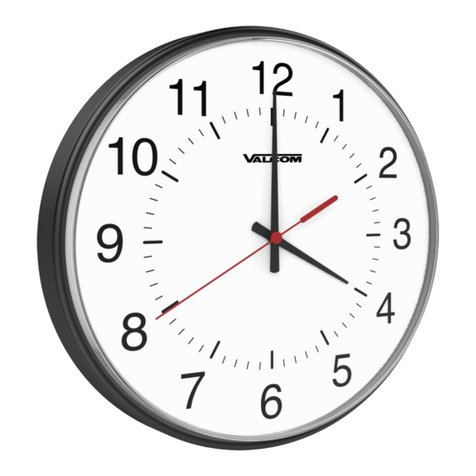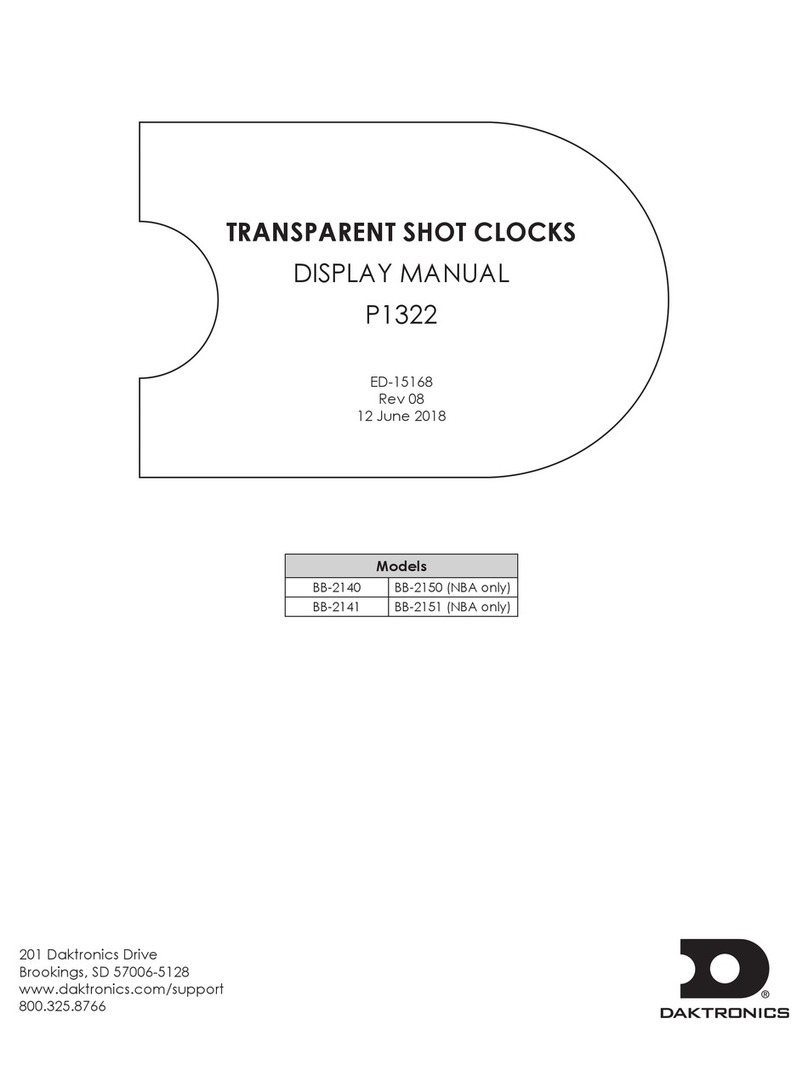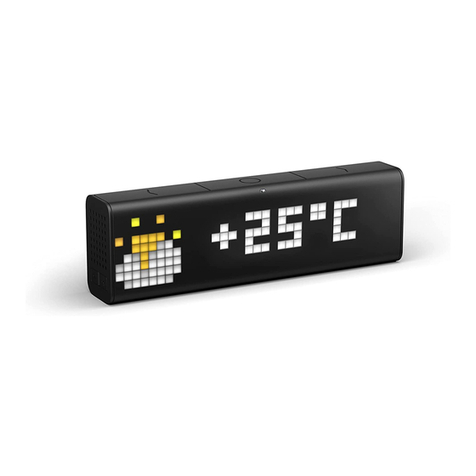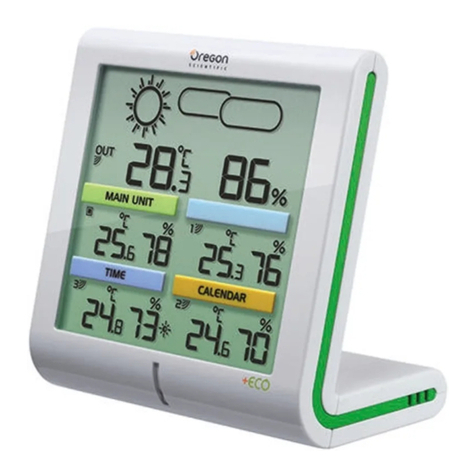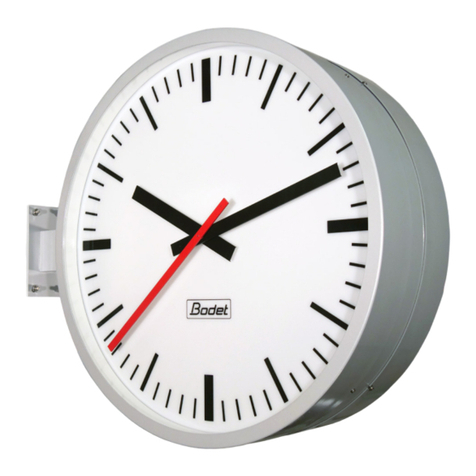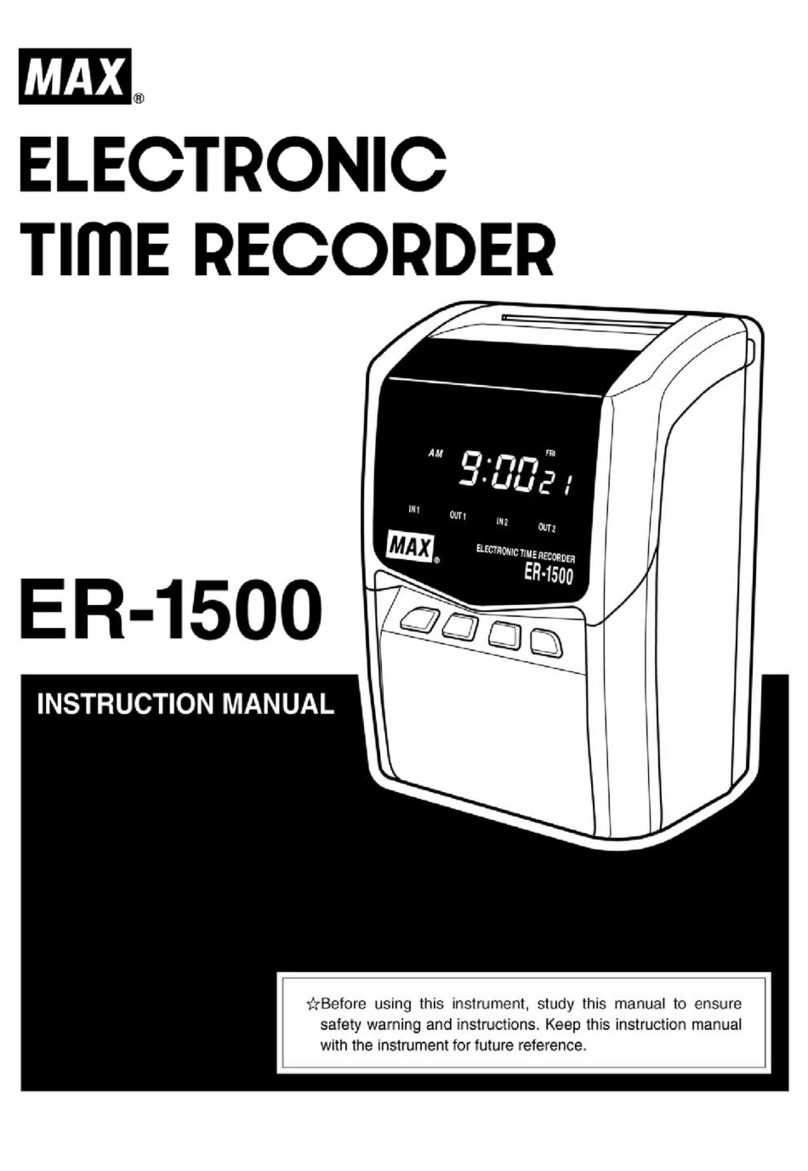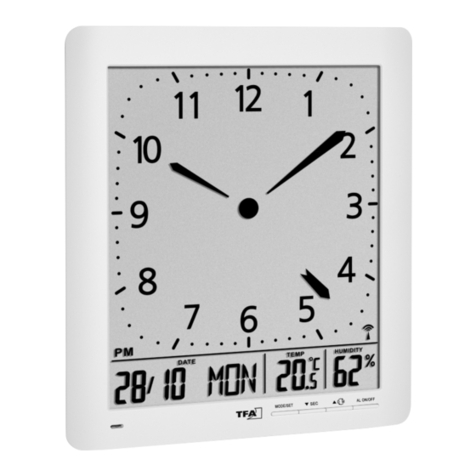Bricon 100 User manual

BRICON Electronic Clocking Device
Belgian Racing pigeons Information and registration system
Manual for basketing with BRICON on the loft
BRICON 100/500/1000.
BA-BSC/TW-ENG/08
Contacts: Ludo Wille: GSM +32 (0)475/ 25 30 21
BRICON nv
Hoge Heerweg,49
9100 Sint-Niklaas
België
Tel: +32 (0)3/ 777 39 74
Fax: +32 (0)3/ 778 07 35
Website: www.bricon.be
e-mail: [email protected]

2
The BRICON CLOCKING DEVICE.
manual: contents
1. Introduction 4
1.1. Electronic clocking systems, the basic principles. 4
1.2. What is RFID? 4
1.3. What are the advantages of RFID? 4
1.4. RFID and electronic clocking. 5
2. The BRICON range. 6
2.1. Advantages of the Bricon system. 6
2.2. The three types of electronic clocks In the BRICON range. 6
2.2.1. Little BRICON 100. 6
2.2.2. Little BRICON 500. 6
2.2.3. .Little BRICON 1000. 6
2.3. The three types of antennas in the BRICON range. 7
2.3.1. 2-field antenna. 7
2.3.2. 4-field antenna. 7
2.3.3. 6-field antenna. 7
3. Installing the system. 7
3.1. Programming the antennas. 8
3.2. Set up of the BRICON electronic clocking device. 9
3.2.1. Set up. 10
3.2.2. Which power supply to use?. 11
3.2.2.1. Two types of power supply. 11
3.2.2.2. Calculation of the electricity consumption. 11
3.2.2.3. Calculation of the number of adapter cables. 12
3.2.3. Placing the detecting antennas. 12
3.3. Testing the antennas. 13
3.4. Coupling the electronic chip ring to the national foot ring. 14
3.5. Clocking. 16
3.5.1. Clocking a race. 16
3.5.1.1. Extra functions during reading. 17
3.5.2. Clocking a training. 17
4. Race. 18
4.1. Basketing. 18
4.2. Read. 19
4.3. Placing bets. 20
4.4. Listing designated pigeons with the antenna. 21
4.5. Listing designated pigeons without antenna. 24
4.6. View the list of designations. 25
4.7. Delete the list of designations. 26
4.8. Print the list of designations. 27

3
5. Use data. 29
5.1. View data from the EC. 29
5.2. Delete data from the EC. 30
5.3. Printing data from the EC. 31
5.3.1. The overview list in detail. 33
5.3.2. Training clocking list in detail. 34
5.3.3. Race clocking list in detail. 35
5.3.4. The pigeon list in detail. 36
5.3.5. The race list in detail. 37
5.3.6. List of designations in detail. 38
5.3.7. The basketing list in detail. 39
5.3.8. The logbook in detail. 40
5.4. Viewing the pigeon list. 41
5.5. Viewing the races in the EC. 42
6. Options 43
6.1. Viewing the pigeon list. 43
6.2. Delete data from the pigeon list. 44
7. Set up of the EC. 45
7.1. Set number of print-outs. 45
7.2. Set number of lines of the print-out. 46
7.3. Set Auto print 48
7.4. Set the clock. 49
7.5. Set the clock type. 51
7.6. Set the basket number. 52
7.7. Set speed calculation. 53
7.8. Set your language. 55
7.9. Change password. 56
8. Technical data. 57

4
The BRICON electronic clock (EC).
Electronic clocking on the loft.
1. Introduction
1.1. Electronic clocking systems, the basic principles.
The basic principle of an electronic clocking device is the identification of a
pigeon from a distance or identification without direct contact. RFID (Radio
Frequency Identification) is one of the techniques used for this purpose.
This technology has become very popular since the eighties and is already
being frequently used. Electronic clocking systems for pigeons use RFID.
1.2. What is RFID?
RFID systems consist of three elements: an antenna, a decoder and a
transponder.
The antenna emits radio signals which activate the transponder. The data
can be read in the transponder and can be written on. The antenna is the
link between the transponder and the decoder. The contact between the
antenna and the transponder is wireless and consists of radio waves. The
transponder holds the identification data, the decoder interprets these data
and controls the antenna.
A transponder consists of the following components:
a spool used as an antenna,
a chip (IC) which has a radio transmitter / receiver and acomputer with a
memory.
A transponder can only function if it is supplied by power. Depending on the
power source we talk about:
an active transponder or
a passive transponder
An active ID-transponder not only has a antenna spool and a chip, but also
a battery supplying everything with power. This built-in power source
increase the performances of the transponder, enabling it to be read and/or
be written on on larger distances.
Passive ID-transponders have no internal power source, they get their
power from the antenna. The advantage of these transponders is in their
smaller sizes, their smaller production costs and their almost infinite life
span. Since there is no power source their emitted signal is so weak they
can only be read on limited distances.
1.3. What are the advantages of RFID?
The most important advantages of an RFID system can be reduced to the
possibility to identify automatically without using pen and paper. It can be
used in almost all circumstances.
RFID is the obvious means in dusty, dirty, greasy, wet and even very
aggressive places.

5
RFID-transponders and readers have no moving parts, so the systems are
very easy to maintain and have a very large life span.
RFID can identify without physical contact.
RFID is very swift, the connection can be made in a few hundredths of
seconds.
RFID still operates under very extreme circumstances.
1.4. RFID and electronic clocking.
An electronic clocking system actually is an RFID system composed of
three elements:
-a transponder or chip ring
-a part in the club (universal basketing antenna, UBA), the BRICON
CLUBSYSTEM,
-a part at the fancier's loft (loft antenna)
-and a part in which the data are stored.
The part in which the data are stored called in this document "terminal" or
electronic clock (EC) for uniformity's sake.
The CLUB SYSTEM always remains in the club, the loft antenna is in the
fancier's loft. The EC is the mobile part which has to be in the club when
basketing or clocking.
By creating a standard we want to obtain a connection between the devices
in the club and the terminal. The connection between the terminal and the
loft antenna does not have to be compatible since the fancier normally only
uses the products of one manufacturer. In most countries a pigeon fancier
is tied to one single club and cannot basket anywhere else.
The fancier's individual freedom, regarding the choice of his electronic
system, is quite limited. He can only choose the system his club uses, or he
can opt for not clocking electronically. The persons responsible for the club
decide what system should be used.
In Belgium however, every fancier can basket in several (four, five or more)
different clubs and enter several flights. Each fancier can choose from a
large number of flights, that is probably the reason why the Belgian pigeon
is so much wanted. Most races are flown in Belgium, and the selection is
the hardest in Belgium.
Several clocking systems are put up for sale. In principle, these systems
are not mutually compatible.
BRICON also developed a unique compatible system: the BRICON
CLUBMASTER (this system is used in several countries, such as
Belgium). This system enables you to basket without having to
manipulate the fanciers' device. Each fancier is treated equally, the
staff of the club only needs to know how their BRICON CLUBMASTER
functions in order to be able to help each fancier with a homologated
device. If you need more information about this system, you can
contact your salesman.

6
2.The BRICON range.
2.1. Advantages of the BRICON system.
-BRICON is completely Belgian: programming, assembling and high-tech
knowledge
from the centre of pigeon racing.
-BRICON has quick and reliable antennas.
-the BRICON antennas are fully waterproof and can resist temperatures
from –10°C up to 80°C.
-the BRICON antennas do not have any special entries (tunnels) for
detection.
-the BRICON antennas don’t need to be adjusted.
-the BRICON antennas are easy to install (flat surface; 2cm high ) and
can be placed under the arrival board.
-BRICON gives a 2 year warranty on the antennas.
-the BRICON antennas read all the registered electronic rings.
-BRICON is easy to use, and gives complete info on display. Installation
only takes a few minutes
-the Bricon Electronic Clock has unlimited possibilities. The BRICON
product range is complete. Each fancier can set up his own needs and
choose the facilities he wants.
-BRICON has the best prices.
This manual gives an explanation of all the possibilities of the different
clocks (EC) and of the assembling and set up of the equipment. It is
important to read the manual
before you start working with the system.
2.2. The three types of clocks (EC) in the BRICON range.
Bricon has 3 types of clocks. These are fully automatic, you only need to
connect them. All 3 clocks can also register training flights. The Bricon
Clocks are easy to use; there are no mistakes possible during a race
recording .
2.2.1. LittleLittle BRICON 100.
Clocking device for 100 pigeons.
Choice between 1 or 2 field antennas (not compatible).
Maximum 4 antennas can be connected.
2.2.2..LittleLittle BRICON 500.
Clocking device for 500 pigeons.
Choice of 2, 4 or 6 field antennas (compatible).
Maximum 8 antennas can be connected.
2.2.3. LittleLittle BRICON 1000.
Clocking device for 1000 pigeons.

7
Choice of 2, 4 or 6 field antennas (compatible).
Maximum 16 antennas connectable.
An own printer can be connected, 7 different lists can be printed.
Modem / fax can be connected for the announcements.
LittleLittle BRICON
100/500/1000
2.3.The three types of antennas in the BRICON range.
2.3.1. 2-field antenna.
28 cm wide
registers on the total
surface.
2.3.3. 4-field antenna.
50 cm wide.
registers on the total
surface.
2.3.3. 6 path antenna.
75 cm wide.
registers on the total
surface.
2 field, 4 field, 6 field antenna
3. Installing the system.
Before using the system, several steps need to be done.
First the antenna(s) need to be programmed. Then the system must be
installed on a correct and proper way. The next step is to test the
antenna(s). The last step is to couple the electronic chip ring to the National
Foot ring number. Each step is explained in a separate chapter.

8
You can set up your language (see Set up your language.).
3.1. Programming the antennas.
Before you can start with the Bricon Electronic Clocking Device, the
antennas need
to be programmed. Make the set up as demonstrated in item Set up. After
the set up, follow the steps below.
-Little 1000 -
>Clocking
Menu
Time : 16:14:16
When you connect the EC, wait for a long
beep and a few seconds later a short beep.
Then press <C>.
Here the start up menu is shown on the
display.
-Little 1000 -
Clocking
>Menu
Time : 16:14:18
Press the “↓” key on the keyboard of the EC
till “Menu” is selected.
Press <OK>.
-MENU (5)-
1.Race
2.Use data
>3.Options
4.Set up
5.PC-Interface
On the new display 5 submenus appear. (The
number between brackets indicates the
number of submenus.) We only see 3
submenus. By pressing “↓” , or by entering
the figure before the submenu on the EC, a
submenu can be selected. Select “Options”.
Press <OK>.
-OPTIONS (3)-
1.Pigeon list.
>2.Prog.Anten
3.AntenTest
Select “Prog. Antenna.”.
Press <OK>.
Disconnect
antennas.
<OK>
Disconnect the antennas.
Press <OK>.

9
Connect antenna 01
<C> Stop
<OK> Continue
Connect the antenna which needs to be
numbered.
Press <OK>.
Ver. : 1.02
Press <OK>
The display shows the version number.
Antenna 01 is
numbered
<C> Stop
<OK> Continue
The antenna is numbered. All antennas need
to be programmed this way, all antennas
need to be connected separately to be
programmed.
Press <OK> to number the next antenna.
Press <C> to stop.
3.2. Setting up the Electronic Clocking Device.
The antennas are set up in line with a RS485 cable. On each antenna 4 m
of cable is already attached. If this is not sufficient extra cable can be
placed between the antennas.The Electronic Clock (EC) is also connected
to the antennas.The maximum length of a set up is about 100 m. Between
the first and the second antenna an adapter cable is placed. An end plug is
placed on the last open end
of the set up.

10
3.2.1. Set up.
Presentation of a simple set up.
6
5
34
22222
1
1.
2.
3.
4.
5.
6.
ElectronicClock(EC)
Antenna.
Adaptercable.
Endplug.
Emergencypowersupply(optional).
Powersupply1500 mA.
a.
b.
e.e.e.
e.
e.
c.d.
a.b.c.d.f.
f.
Connectthe
Rs485 cableto
theEC.
Tightenthe
screws.
Connecteachpower
supplycableto
anoutlet
connectionofthe
emergencypower
supply.
Connectthepower
supplycabletothe
inputconnection
oftheemergency
powersupply.
Connecttheend
plugtothelast
openend ofthe
set-up.Tighten
thescrews.
Connecttheadapter
cablepersetoftwo
antennas.Tighten
thescrews.
Makethecable
connection.
Tightenthe
screws.
e.
(*)The power supply and the number of adapter cables is depending on the
electricity consumption of the complete network. (see Which power
supply to use?.)

11
3.2.2. Which power supply to use?.
3.2.2.1. Two types of power supply.
Type of power supply
Type 1= up to 1500 mA
Type 2= up to 6000 mA
3.2.2.2. Calculation of the electricity consumption.
Fill in the table below.
Calculate the total electricity consumption :
total
Electronic clock x 70 mA = mA
2-field antenna x 170 mA= mA
4-field antenna x 280 mA= mA
6-field antenna x 390 mA= mA
Cable ( metre) x 2,8 mA= mA
Total mA
Use the right power supply. Make sure that the total electricity consumption
of the network does not exceed the maximum capacity of the power supply.
Type 1: Extra power supply 12V 1,5 Amp (to 1500 mA.)
Type 3: Extra power supply 13,8 V 6-8 Amp (to 6000 mA.)

12
3.2.2.3. Calculation of the number of adapter cables.
Each component consumes a part of the energy, therefore we have to
spread the adapter cables so that each component on its own has enough
energy to function perfectly!
For every 3 up to 5 components the use of 1 adapter cable is advised.
The adapter cables need to be spread over the network.
For the calculation of the electricity consumption and the number of
adapter cables in larger networks we recommend to ask the advice of
your salesman.
3.2.3. Placing the detecting antennas.
All antennas can be placed on top or under the arrival board of the pigeon
loft. The entrance to the inside of the loft must be smaller than the length of
the antennas. A tunnel is not necessarry for BRICON antennas, the
antenna registers over the whole surface ! It is recommended to slow down
the pigeons the moment they enter the detection field .This to make sure
the pigeon walks over the fields.The chip ring on the pigeon must be in a
range of max. 7 cm hight to be properly detected. No metal items are
allowed in the detection field of the antennas, because they can disturb the
detection of the rings. It is adviced to keep metal items at about 10cm away
from the antennas! The detection area of the paths is at the front of the
antenna. It is recommended to place the front of the antennas to the inside
of the loft (see figures 1 and 2).
Figure 1
Entrance
Arrival board
Antenna
Detection field
Min 7 cm.
Cable
Cable
Front view

13
Figure 2
Entrance Arrival board
AntennaDetection field
2 cm.
5 cm.
Cable
Cable
Top view
3.3. Testing the antennas.
After programming the antennas as explained in Programming the
antennas, the system can be tested. Next steps need to be followed :
-Little 1000 -
>Clocking
Menu
Time : 16:14:16
When you connect the EC, wait for a long
beep and a few seconds later a short beep.
Then press <C>.
Here the start up menu is shown on the
display.
-Little 1000 -
Clocking
>Menu
Time : 16:14:18
Press the “↓” key on the keyboard of the EC
till “Menu” is selected.
Press <OK>.
-MENU (5)-
1.Race
2.Use data
>3.Options
4.Set up
5.PC-Interface
On the new display 5 submenus appear. (The
number between brackets indicates the
number of submenus.) We only see 3
submenus. By pressing “↓” , or by entering
the figure before the submenu on the EC, a
submenu can be selected. Select “Options”.
Press <OK>.
-OPTIONS (3)-
1.Pigeon list.
2.Prog.Anten
>3.AntenTest
Select “Antennas Test”.
Press <OK>.

14
Nr:01 02 03
<OK>
The display shows the number of antennas. If
an antenna is not shown on the display, it will
not detect properly. Double-check the
connections and the functioning of the
antenna! (Maybe you need to re-program the
antenna(s).
Press <OK>.
Test antenna:
Hold ring on
antennas.
Hold a chip ring on the antennas.
Press <OK>.
Test antenna:
Hold ring on
the antenna.
7a3b5e04
Check if the rings are registered.
Press <OK>.
Repeat the last two steps for each antenna using another ring.
3.4. Coupling the electronic chip ring to the national foot ring.
An advantage of the BRICON system is that the fancier can pre-couple his
pigeons at home. When this pre-coupling is done he can already start using
the sytem for training sessions.To take part in official races, the pre-
coupled rings are transferred
to the club computer and sealed. Once this is done, the system may be
used on official races.
To pre-couple the rings, next steps should be followed.
Connect the EC in the network as described in Set up.
-Little 1000 -
>Clocking
Menu
Time : 16:14:16
When you connect the EC, wait for a long
beep and a few seconds later a short beep.
Then press <C>.
Here the start up menu is shown on the
display.
-Little 1000 -
Clocking
>Menu
Time : 16:14:18
Press the “↓” key on the keyboard of the EC
till “Menu” is selected.
Press <OK>.

15
-MENU (5)-
1.Race
2.Use data
>3.Options
4.Set up
5.PC-Interface
On the new display 5 submenus appear. (The
number between brackets indicates the
number of submenus.) We only see 3
submenus. By pressing “↓” , or by entering
the figure before the submenu on the EC, a
submenu can be selected. Select “Options”.
Press <OK>.
-OPTIONS (3)-
>1.Pigeon list.
2.Prog.Anten
3.AntenTest
Select “Pigeon List”.
Press <OK>.
-PIGEONS (3)-
->1. Insert
2. View
3. Delete
Select “Insert.”.
Press<OK>.
Self-connection
El/IDring
Hold pigeon on
antenna.<C> stop
Put the chip ring on the pigeon and hold
the chip ring above the antenna.
Enter country :
<OK> NL <1>BE
<2> FR <3> DV
<4> PT <0> Other
Make a selection.
Press <OK> for the Netherlands, <1> for
Belgium …
Enter year :
<OK> ready
<Arrows> Select
BE-99
With the vertical arrows the year can be
changed (e.g. 99)
Press <OK>.
Enter ID number:
<OK> ready
<Arrows> Select
BE-99-4210569
Give the ring number.
7 characters are entered. Overwrite the zeros
e.g. (a ring of 7 characters) 4210569
With the horizontal arrows you can move from
the left to the right.
Enter sex :
Hen or Cock
<C> <OK>
BE-99-4210569
Select the sex. Press <C> for hen, press
<OK> for cock. When the sex is still unknown
choose cock. The sex can be changed
anytime.

16
Are data below
correct ?
<C>NO <OK>YES
BE-99-4210569
If the information is correct press <OK>.
3.5. Clocking.
3.5.1. Clocking a race.
Make a set up as dicribed in Set up.
CLOCKING
MODE
With 1 antenna.
18/07 11:22:33
Pigeons:0
When the EC is connected it automatically goes
to ‘CLOCKING MODE’
97-5041105 P: 1
18/07 11:45:22
Des: 2
BARCELONA T:1
The display shows how many antennas are used
to clock. If this number does not correspond to
the effective number of antennas you need to
retest the antennas (zie Testing the antennas.).
Possibly the antennas need to be reprogrammed
(see Programming the antennas.).
The race will be clocked.
96-5282098 P: 2
18/07 15:57:43
Des: 1
BARCELONA T:2
While clocking, the display shows the
footnumber, the place of arrival, the day and hour
of arrival, the designation of the pigeon, the
racename and the antenna on which the clocking
was registered.
97-5041105 P: 1
18/07 11:45:22
Des: 2
BARCELONA T:1
Using the vertical arrows you can scroll in list of
arrivals (this is possible during clocking).

17
3.5.1.1.Extra functionsduring clocking.
Nr:01
<C>
-Press“1”: the display shows al connected
antennas.
Press <C>.
ACTIVATE
MODULE?
<C> NO <OK> YES
-Press“2”: Press <OK> to activate the storing
module.
CLOCK
TRAINING?
<C> NO <OK> YES
-Press “3”: Press <OK> for deactivating the
clocking of training races (during the race).
3.5.2. Clocking a training.
Function: This is the menu to clock a training flight.
TRAINING MODE
With 1 antenna.
19/07 09:22:33
Pigeons:0
When the EC is connected the device
automatically goes to ‘TRAINING MODE’
97-5041105 P: 1
19/07 09:25:22
Training
Trap:2
The display shows how many antennas are
used to clock. If this number does not
correspond to the real number of antennas
you need to retest the antennas (zie Testing
the antennas.).
Possibly the antennas need to be
reprogrammed (see Programming the
antennas.).
96-5282098 P: 2
19/07 09:27:43
Training
Trap:2
The training will be clocked.
While clocking, the displays shows the foot
number, the place of arrival, the day and hour
of arrival, the type of race (Training) and the
antenna on which the clocking was registered.
Using the vertical arrows you can scroll (this
is possible during clocking).

18
The clocked pigeons stay in the memory of the EC till they will be deleted
manually (see Delete data from the BA. ).
A pigeon can be clocked only once, to clock the pigeon again you need to
delete his data !
4. Race.
When a fancier is basketing a race, the EC has to be taken with the
pigeons to the club. In the club the EC has to be connected to the CLUB
SYSTEM. During basketing the pigeons are registered in the EC for the
specific race.
A list of information concerning a race can always be printed from the EC
(see Print data from the PC) .
4.1. Basketing
-Little 1000 -
> Clocking
Menu
Time : 16:14:16
This is the start-up menu
-Little 1000 -
Clocking
> Menu
Time : 16:14:19
Pres the “↓” key on the keyboard of the EC till
“Menu” is selected.
Press <OK>.
-MENU (5) -
>1.Race
2.Use data
3.Options
4.Set up
5.PC Interface
On the new display 5 submenus appear. (The
number between brackets indicates the
number of submenus). We only see 3
submenus. By pressing “↓” , or by entering the
figure before the submenu on the EC, a
submenu can be selected .
Select “Race”.
Press <OK>.
-RACE (5) -
>1.Basketing
2.Read
3.Bets
4.Designate
5.Master clock
This menu,“Basketing”, can be used when
the EC is connected to the Club system.
A fancier can’t use this menu at home.

19
Attention: all released data need to be deleted before basketing can start (
see Delete data from the EC.)
4.2. Read.
Function: This menu is used in the club to read the clock
-Little 1000 -
> Clocking
Menu
Time : 16:14:16
This is the start-up menu.
-Little 1000 -
Clocking
> Menu
Time : 16:14:19
Select with the arrow “↓” on the keyboard of
the EC “Menu” .
Press <OK>.
-MENU (5) -
>1.Race
2.Use data
3.Options
4.Set up
5.PC Interface
On the new display 5 submenus appear (the
number between brackets indicates the
number of submenus). We only see 3
submenus. By pressing “↓” or by entering the
figure before the submenu on the EC , a
submenu can be selected .
Select “Race”.
Press <OK>.
-RACE (4) -
1.Basketing
>2.Read
3.Bets
4.Designate
5.Master clock
This menu,“Read”, can be used when the EC
is connected to the Club system. A fancier
can’t use this menu at home.

20
4.3. Placing bets.
-Little 1000 -
> Clocking
Menu
Time : 16:14:16
This is the start-up display.
-Little 1000 -
Clocking
> Menu
Time : 16:14:19
With the arrow “↓” on the display of the EC
the ‘Menu’ is selected.
Press <OK>.
-MENU (5) -
>1.Race
2.Use data
3.Options
4.Designate
5.Master clock
On the new display 5 submenus appear (the
number between brackets indicates the
number of submenus). We only see 3
submenus. By pressing “↓” or by entering the
figure before the submenu on the EC , a
submenu can be selected. Select “Race”.
Press <OK>.
-RACE (4) -
1.Basketing
2.Read
>3.Bets
4.Designate
5.Master clock
Although this menu can be entered it is not
used for this country.
Other manuals for 100
1
This manual suits for next models
5
Table of contents
Other Bricon Clock manuals
